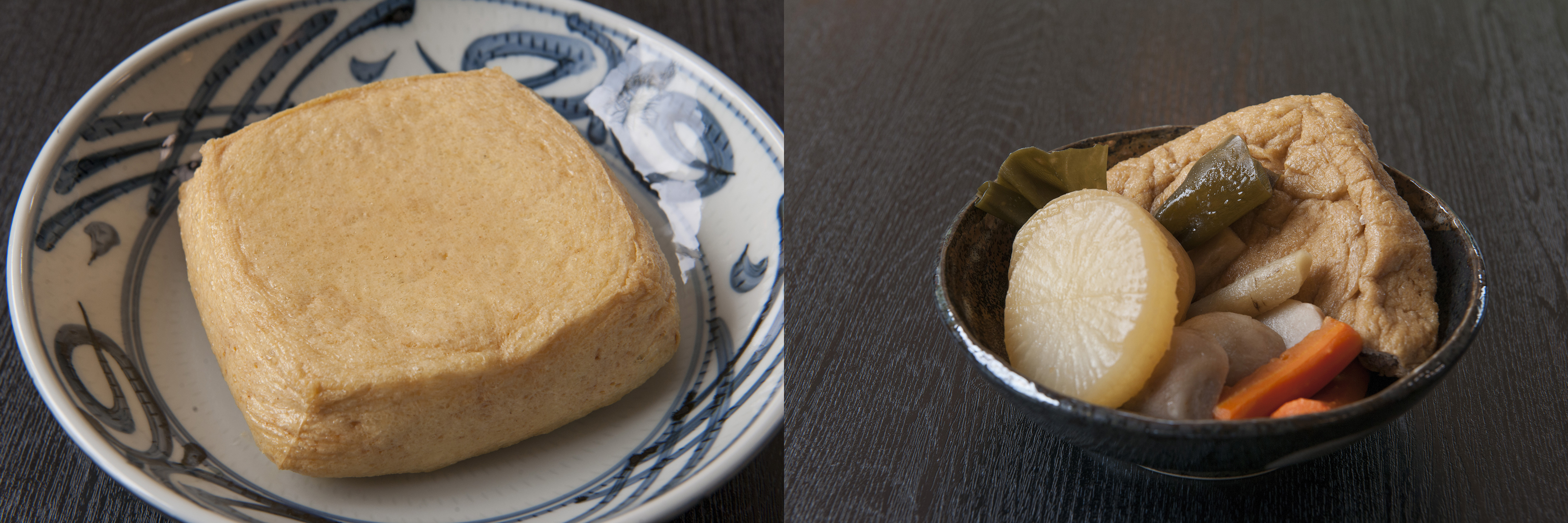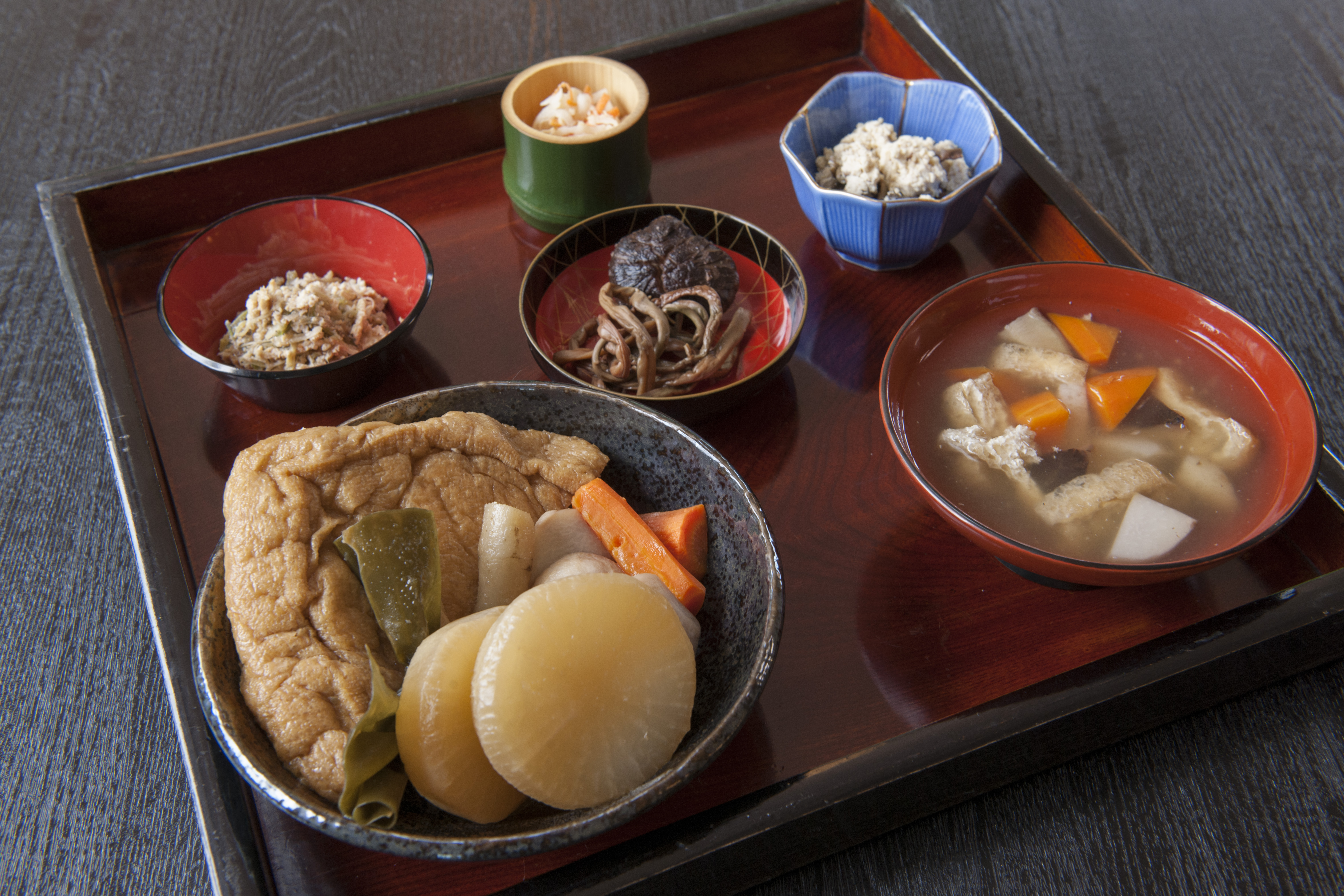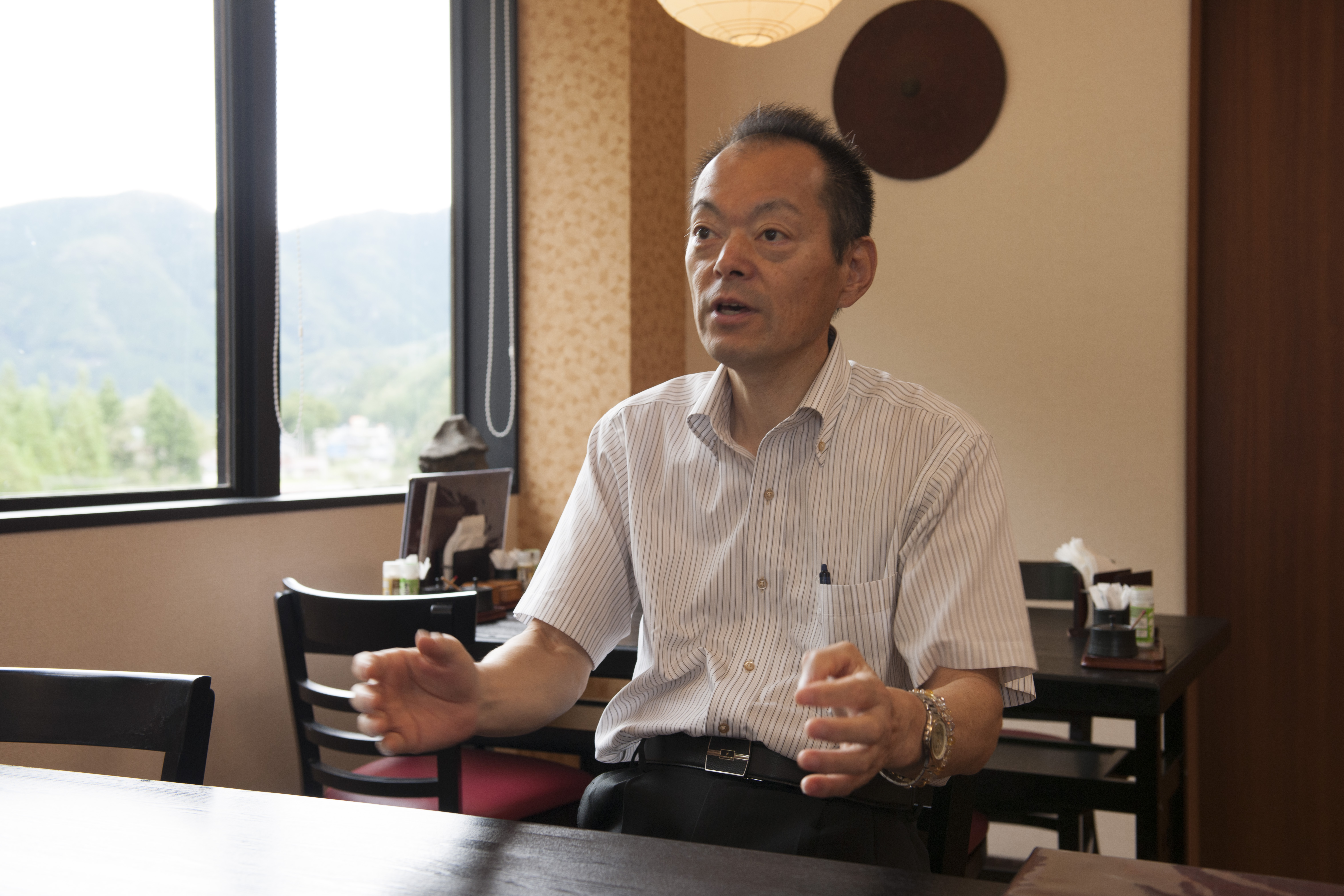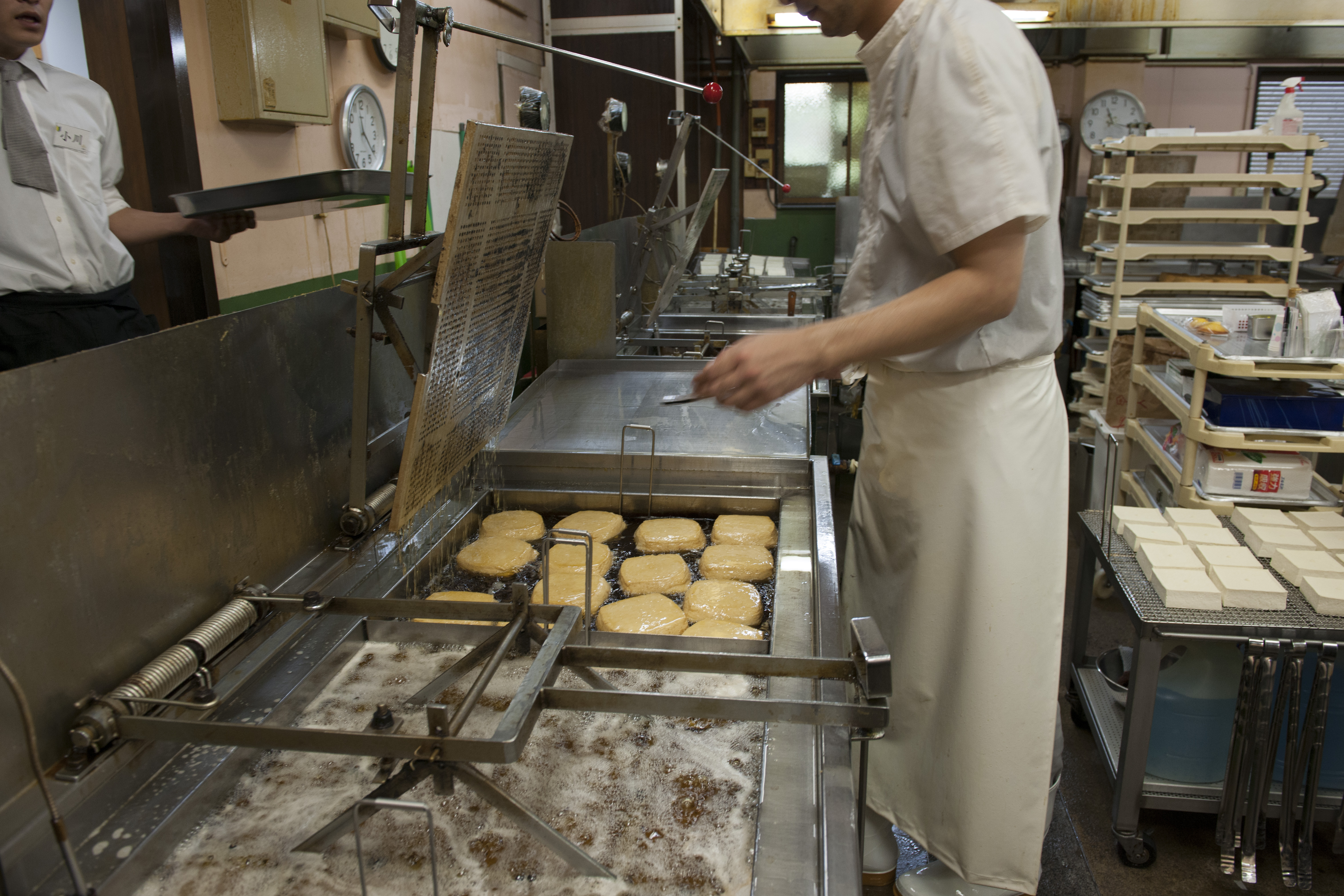TRAVELOGUE Fukui
“The Proud Traditional Food Culture of Japan’s “Best” Prefecture”
- text : Kosuke Miyata
- photo : Koki Nishimura
- edit : Seiji Takeuchi (nano.associates)
chapter 3
“Fukui’s Abura-age Consumption: Twice the National Average.”
Fukui prefecture’s traditional cuisine is strongly influenced by Buddhism culture. It is almost as though without Buddhism the traditional foods would not exist. Fukui’s kyoudo ryouri and shoujin ryouri, the Lenten dinner, are closely related. One example is abura-age, a fried tofu dish, but making tofu takes a lot of time and effort. You first mush soy beans, then squeeze them to collect soy milk, then add nigari (bittern/thickener), then… It’s a series of steps longer than you can imagine to produce such a simple food! And yet, its sophisticated time- and effort-consuming steps are the very aspect that gives the act of cooking the essence necessary for it to be a Buddhism training.
“Fukui’s Most Famous Abura-age in the Middle of a Mountain.”
The most famous abura-age in Fukui is Takeda’s (abura-)age. A store named Taniguchi-ya in the Takeda area, surrounded by mountains in the East part of Sakai City, is visited by not just people from Fukui people, but across Japan. The large thick fried tofu is its popular product, and it’s not a marketing invention to suit the preference of modern people, but the very shape and thickness the store has kept since the day of its inception. Taniguchi-ya opened in 1925 in the Taisho era. With a dream of opening a tofu shop of their own, the founder Mr and MrsTaniguchi went to a tofu shop by the entrance gate of the Eihei-ji temple and asked the owner to take them as live-in employees. From there the couple learned all the necessary skills to be masters. Abura-age was not something that was readily available all the time, but a very valued dish served only for ceremonial occasions, wakes and weddings.
By the time the Taniguchis’ second generation took over the running of the business, abura-age was a regular staple of modern diets, at the start of a new interest in traditional dishes using the ingredient. Daikon no nishime (“simmering of radish”) is a vegetable simmering dish. Interestingly, depending on the size of abura-age, the dish name changes: one with large sized abura-age is called dai nishime (“large simmering of radish”) and one with smaller sized abura-age is called ko nishime (“small simmering of radish”). It shows how significant abura-age’s presence is as an ingredient of simmering dishes here in this region.
A dish called kuzu-mawashi is another kyoudo ryouri we find at this region’s dinner tables, a soup in which various vegetables and abura-age are simmered in dashi (soup stock) and starch is added at the end to thicken.
The third generation owner of the Taniguchi-ya store, Mr. Makoto Taniguchi, says, “Abura-age too can evolve.” He is committed to carrying on the legacy and the traditional cooking methods of his father and grandfather, whilst challenging the conventional image of tofu stores by sheer persistence in choosing what is best at every step of the way, from which oil to be used to how abura-age should be fried. He has already succeeded in raising the status of abura-age to that of a luxury food ingredient.





